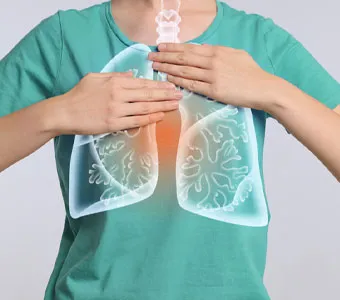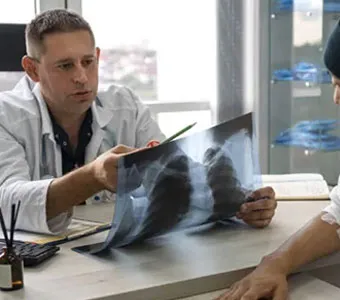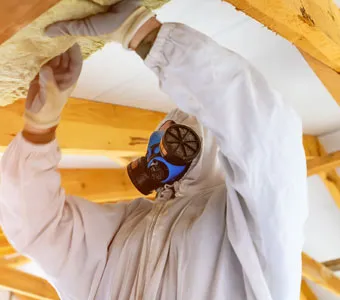The Role of Occupational Health and Safety Professionals in Preventing Engineered Stone Silicosis
The role of occupational health and safety professionals in preventing engineered stone silicosis is crucial for protecting workers in industries where exposure to crystalline silica is common. These professionals are responsible for implementing and monitoring safety protocols designed to minimize the risk of silicosis among workers handling engineered stone materials.
By conducting regular health assessments, providing training on proper protective equipment usage, and ensuring compliance with safety standards, occupational health and safety professionals play a vital role in reducing the occurrence of silicosis.
The Importance of Occupational Health and Safety Professionals in Silicosis Prevention
Occupational health and safety (OHS) professionals play a crucial role in preventing silicosis, particularly in industries like engineered stone fabrication, where workers are frequently exposed to harmful silica dust.
These professionals are responsible for assessing workplace hazards, implementing safety protocols, and ensuring compliance with regulations to minimize exposure. They also conduct regular risk assessments, identify potential dangers, and develop strategies to protect workers’ health.
OHS professionals educate workers about proper protective measures, such as using appropriate respirators and ventilation systems, to reduce silica inhalation. Their proactive approach ensures a safer work environment by reducing the risk of silicosis and its long-term, debilitating health consequences and complications.
Key Responsibilities of Occupational Health and Safety Professionals
OHS professionals who work with companies involved in engineered stone fabrication have several key responsibilities for protecting workers from silicosis. They evaluate the work environment for potential silica exposure and recommend the implementation of appropriate control measures, such as water suppression systems or ventilation systems, to limit dust inhalation.
OHS professionals also monitor air quality levels regularly and ensure that workers wear proper personal protective equipment (PPE), such as respirators. Training workers on safe handling techniques for cutting and polishing stones is another critical responsibility. By fostering a culture of safety, OHS professionals help mitigate the risks associated with prolonged silica exposure.
How Occupational Health and Safety Protocols Reduce Silica Dust Exposure
Occupational health and safety (OHS) protocols are essential in reducing silica dust exposure in high-risk industries like engineered stone fabrication. These protocols include engineering controls like wet-cutting and dust extraction systems that capture silica particles before they can be inhaled by workers.
OHS professionals also establish clear guidelines for workers on how to safely handle silica-containing materials and maintain proper hygiene practices to avoid dust buildup. Regular air monitoring and routine inspections help ensure compliance with safety standards.
Training and Education to Prevent Silicosis in Workplaces
Training and education are vital components in the fight against silicosis in engineered stone workplaces. Occupational health and safety professionals are responsible for educating workers about the risks of silica exposure and the importance of using protective measures.
Training sessions should cover proper respiratory protection, safe work practices, and the correct use of dust suppression equipment, such as wet-cutting methods. Wet-cutting is an effective technique that reduces silica dust by using water to suppress dust particles during the cutting and polishing processes.
Workers should also be taught to recognize the symptoms of silicosis early so they can seek medical attention promptly. By providing thorough training, workers are better equipped to protect their health and prevent exposure to harmful silica dust.
FAQs
Q: What Is the OSHA Rule for Silica?
A: OSHA’s rule for silica exposure mandates that employers limit workers’ exposure to respirable crystalline silica, set at an eight-hour time-weighted average of 50 micrograms per cubic meter of air. Employers must provide protective equipment like respirators, ensure workers receive regular medical surveillance and training on silica hazards, and implement safety measures, such as using water or ventilation systems,
Q: What Is One of the Proposed Safety Guidelines for Businesses Working with Engineered Stone?
A: One proposed safety guideline for businesses working with engineered stone is the implementation of wet-cutting methods to minimize airborne silica dust. Additionally, employers are encouraged to provide adequate personal protective equipment (PPE), including respirators, and ensure adequate ventilation in workspaces where engineered stone is fabricated. These measures aim to reduce workers’ exposure to dangerous levels of silica dust and prevent silicosis.
Q: What Precautions Are Taken to Safeguard Workers Against Silicosis?
A: To safeguard workers against silicosis, employers must provide personal protective equipment (PPE), such as respirators, install dust control systems, and implement wet-cutting methods to reduce airborne silica dust. Regular medical surveillance and training on silica risks are also critical to identifying early symptoms and ensuring safe work practices. Employers should comply with OSHA regulations to maintain a safe working environment and minimize exposure.
Q: What Are the Three Major Methods of Protecting Yourself from Silica Hazards?
A: The three major methods of protecting yourself from silica hazards are: 1) using wet-cutting methods or ventilation systems to control dust, 2) wearing appropriate personal protective equipment (PPE), such as respirators, and 3) ensuring proper training and medical surveillance to detect early symptoms of silicosis. Employers must implement these strategies to minimize exposure to harmful silica dust and ensure the safety of their workers.
Q: How Can Employers Ensure Compliance with Silica Safety Regulations?
A: Employers can ensure compliance with silica safety regulations by implementing effective dust control measures, such as wet-cutting techniques, and ensuring proper ventilation systems are in place.
Providing personal protective equipment, including respirators, and offering regular training on silica exposure risks and safe work practices are essential. Additionally, employers should conduct medical surveillance to monitor workers’ health and detect early signs of silicosis.
Schedule Your Silicosis Consultation Today
Silicosis is a preventable disease, but the right training, equipment, and workplace practices can greatly reduce the risk that workers contract silicosis. Occupational health and safety professionals play a critical role in educating workers about silica exposure by implementing dust suppression techniques like wet-cutting and promoting early detection through awareness of silicosis.
Unfortunately, not all companies take the threat of silica exposure seriously. Failing to enact proven protective measures can leave employees exposed to highly dangerous silica particles. The law firm of Wallace & Graham is here to guide you through the journey to compensation and justice. Contact our office today to schedule your consultation.






